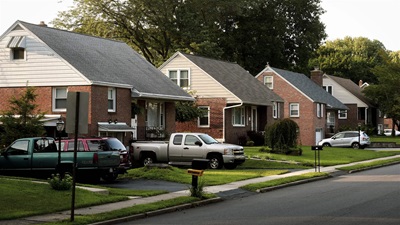Rural Homeownership Support Requires Home Construction, Repairs, and Small Mortgage Financing
Takeaways from eastern Kentucky provide lessons for other states
The nation’s housing challenges are often framed within the context of cities: Boston’s high and rising rents, San Francisco’s brutal and persistent homelessness, and New York’s cramped and expensive apartments.
Yet rural communities also struggle to provide residents with high-quality, affordable homes. The rural housing shortage eclipsed 456,000 units in 2022 and resulted from a lack of new construction, mounting home repair needs, and difficulties obtaining mortgage financing. With housing supply not keeping up with demand, home prices in rural areas increased faster than the national average from 2020 to 2023. As a result, over one-third of rural renters are cost-burdened, meaning they spend over 30% of their income on rent.
A new report written by the Consumer Federation of America and commissioned by The Pew Charitable Trusts takes a closer look at housing challenges in Perry County, a rural community in eastern Kentucky historically reliant on coal mining jobs. Researchers interviewed a range of local stakeholders—homeowners, renters, state housing advocates, academics, housing counselors, lenders, and real estate agents—to better understand residents’ experiences in the housing market.
This research had three key findings:
1. Eastern Kentucky has a housing shortage.
Like much of the nation, eastern Kentucky has a housing shortage that is driving up costs for residents. One estimate showed Perry County short an estimated 1,163 homes for both renters and homeowners in 2024, with eastern Kentucky—defined as the state’s six easternmost Area Development Districts—short over 26,000 homes. Despite ample demand for housing, new homes are rarely built in Perry County: From 2000 to 2023, local officials issued permits for just 191 new homes.
A shortage of buildable land is part of the problem. Perry County is surrounded by steep mountains, with limited flat land available for new construction. Much of the existing buildable land sits atop former strip mines that were carved out of flattened mountaintops. Although many of these mines are now dormant, the mining companies that own the land are often reluctant to sell, preferring to retain the underlying mineral rights or avoid paying the environmental remediation costs typically required when mining properties change hands.
Even when buildable sites are available, developing them is often expensive. New neighborhoods require high-quality roads, utility lines, and water management systems, which are costly to build up steep mountain cliffs. To compensate for these costs, developers typically build large houses that earn high revenue, making them unaffordable for first-time or lower-income homebuyers. One Kentucky housing advocate noted that new housing construction in eastern Kentucky often resembles “McMansions on top of reclaimed strip mines.”
2. Many rural homes need extensive repairs.
When it’s difficult to build, preserving the existing housing stock becomes even more important. Yet eastern Kentucky’s aging homes are accumulating a backlog of unmet repairs, further contributing to the shortage of move-in ready properties. In Perry County in 2023, 8.7% of homes lacked complete plumbing facilities and 6.7% lacked working kitchens. Extreme floods further contribute to home repair needs in eastern Kentucky, causing $331.6 million in property damage from 1967 to 2021.
An interview with a longtime resident and prospective homebuyer in Perry County shows the challenges. Rebekah and her husband rent a home that previously belonged to her grandparents and is now owned by her family. The house is old, with single-paned windows and no insulation, making it hard to heat in the winter. “I don’t think I want to buy it, given how many issues it has,” Rebekah said. But other houses on the market cost “$250K or are a total gut job.”
Rebekah’s story is not unique. The median household income in Perry County is just over $45,000 per year, so many residents have little room in their budget to pay for preventative maintenance or nonessential repairs. And it can be difficult for existing homeowners to finance repairs using home equity: The median home value in Perry County is just $90,700, which limits the total amount of equity available for home renovation projects, and lenders are often hesitant to offer cash-out refinances to even the most creditworthy borrowers.
3. Available mortgage financing often doesn’t fit local needs.
Reality TV shows make it seem like anyone can turn a fixer-upper into their dream home, but in real life, it can be difficult to get a loan to finance both a home purchase and subsequent renovations. For example, a mortgage lender at a savings and loan bank in Perry County said that customers often request such combination loans for dilapidated properties, but that his bank was not able to provide them because the amount of the loan would exceed the value of the home.
But even for homes without significant repair needs, it can be difficult for prospective homebuyers to get a small mortgage for less than $150,000. Such loans are often unprofitable for lenders to make, which contributes to above-average denial rates for prospective borrowers and a financing shortfall throughout rural America. In Perry County, mortgage applications are denied at three times the national rate in part because the majority of applicants from 2018 to 2023 sought loans below $150,000. Many of these loans were for manufactured homes, which face unique financing challenges.
The Perry County mortgage lender noted that his institution was open to issuing small mortgages but that they typically required a minimum credit score of 660 with a 20% down payment. These standards exceed the credit minimums set by federal policy and can be difficult for locals to meet: Perry County residents have a median credit score of 652, which is well below the national average of 709.
Policymakers can improve homeownership for rural Americans
To ease eastern Kentucky’s housing crisis and help support rural homeownership, federal and state policymakers could consider strategies that support new home construction, existing home repair, and expanded home financing for purchases and repairs.
To better support new construction, state housing finance agencies could leverage their tax-exempt status and issue housing bonds up to the limits established by law. Another option is to incentivize private investment into the rural housing stock, for example, by subsidizing developers who build new homes or renovate existing homes and then sell to low-to-moderate-income households.
Policymakers can also expand access to rehabilitation loans. While these loans already exist in both the conventional mortgage market and through the Federal Housing Administration’s 203(k) program, they are very much underutilized. To address this, Fannie Mae and Freddie Mac could increase the number of rehabilitation loans they purchase, which would encourage more private home repair lending. The FHA could also simplify documentation requirements for its 203(k) program and allow longer project timelines.
Finally, the Federal Home Loan Banks (FHLBs) could use their mortgage purchase programs to support community banks and community development financial institutions in originating small mortgages. The FHLBs can also direct their annual voluntary affordable housing contributions to repair programs that help preserve homeownership for rural Americans.
Together, policies like these could increase total investment in the rural housing stock and enable more Americans in eastern Kentucky and beyond to achieve their dream of homeownership.
Sharon Cornelissen is the director of housing for the Consumer Federation of America. Adam Staveski is a principal associate with The Pew Charitable Trusts’ housing policy initiative.









